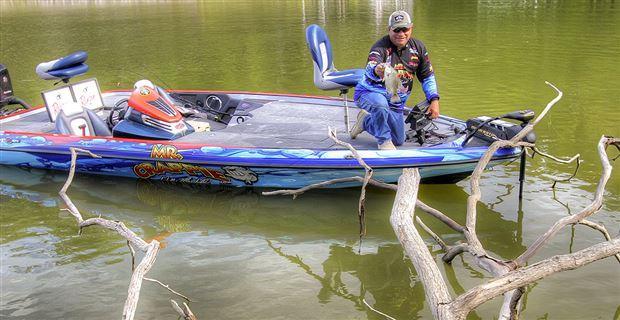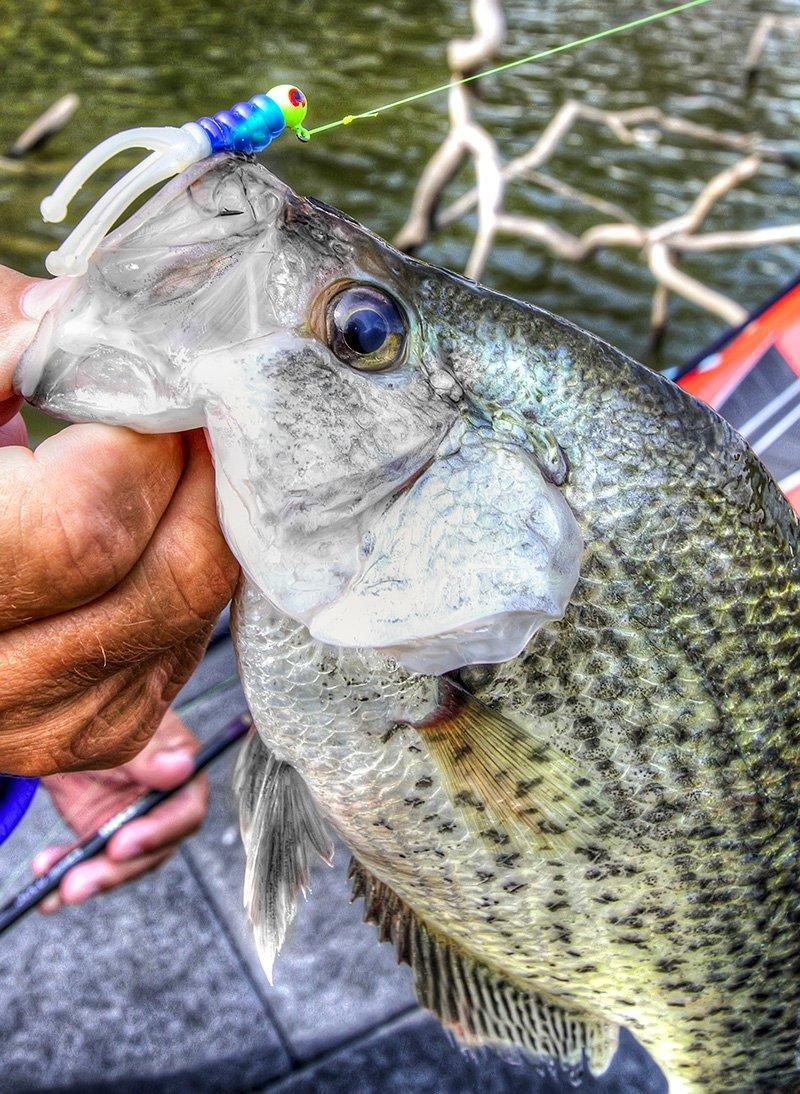If a tree falls into the water and no one hears it, does it make a sound? Who cares? It makes a laydown, and according to Wally Marshall, laydowns make for prime spring crappie fishing.
“Those big laydowns provide a lot of structure, a lot of shade and a lot of protection for the fry,” he said.
Marshall will check out any prominent laydowns he encounters, but he said he prefers the ones that get swept into creek bends. Typically lying on the shallow side where current pushes them onto sandbars, these structures offer key benefits crappie seek.
“The current is constantly bringing food past the laydown where it gets pulled into the slack water,” he said. “Also, once that fry hatches, it has a lot of cover to hide in.”
Inside-out
Marshall likes a traditional laydown where the trees limbs reach outward, but when he finds a large tree that has gotten swept into a reverse position — root ball facing out — he knows he going to find a load of spawners. Reason: This orientation leaves more of the trunk submerged and that means a more easily accessible target zone.
“The root system keeps the trunk off the bottom, so it provides a lot of shade under the trunk,” he said. “You can just run your jig down the side of the trunk and those crappie will be underneath. They will slam it.
“That log may be laying in 8 feet of water at its deepest and those big females will lay their eggs right on that log.”
Big presentation
With the more common laydown configuration, you can forget casting, flipping or pitching. Marshall says the only way to consistently pull crappie out of that limb labyrinth is vertical fishing with precise placement. That means stripping off 6-8 feet of line, pulling it to the side (like flipping) until the jig hangs about 3 inches off your rod tip positioning the jig over a specific spot and then releasing the line for a targeted drop.
Length matters, but Marshall said going too long reduces your ability to control the presentation. He likes a 10-footer fitted with a Mr. Crappie Solo reel — a large arbor, spooler style reel carrying 6- to 8-pound high-vis line.
Marshall jigs those laydowns with his Strike King Mr. Crappie Sausage Head jig — a broad design, which deflects off the cover as he’s poking through branches. Strike King Joker and Crappie Thunder bodies provide the bulky profiles he wants in murky water.
“I’m only using a 1/8-ounce jig head because it allows you to maintain contact with your jig at all times,” Marshall said. “If you go too light, that crappie will take your jig and run you down into those branches.”
Noting that he’ll fire up his H2 Mr. Crappie Hydrowave unit to fire up a laydown with a symphony of baitfish sounds, Marshall stays off the trolling motor to avoid spooking the fish or blowing out the spot.
Distance for catches
You’ll usually find crappie more cooperative when you keep your distance. Tying off to a laydown works, but it’s not preferable, because your boat’s constantly tugging on the laydown and shaking the love shack. Power-Poles or Talons or a homemade mud anchor keeps you in place without spooking the fish.
Learn more on how to catch crappie here!













